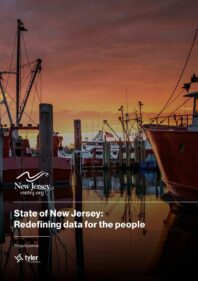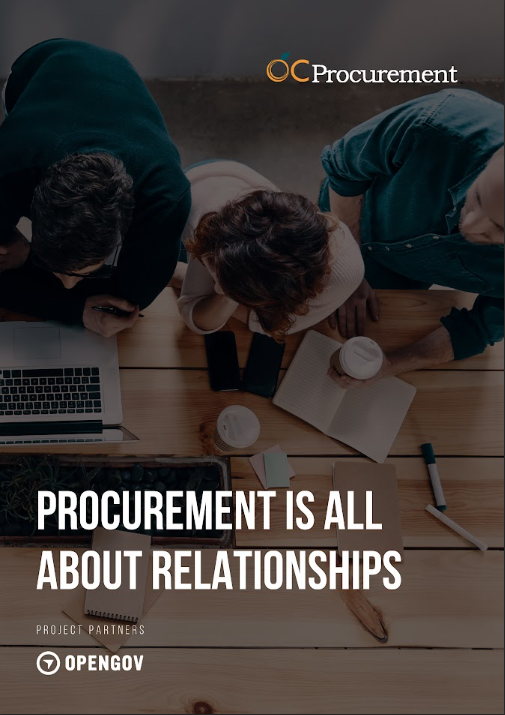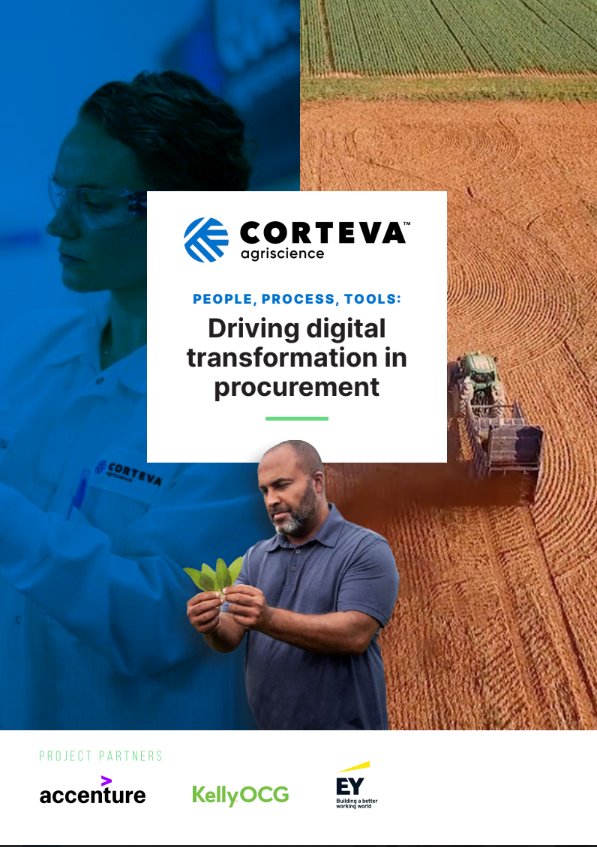
When we think of a Chief Data Officer, a role which has become more commonplace in recent years, our minds go towards customer data and the private sector. After all, when we think of technology in industry, the headlines gravitate towards tales of how technology is transforming the likes of the insurance space or the retail sector. But what do we think of technology, and indeed data, in the public sector? And when we do think of the public sector and how it captures, uses and presents data. Who do we think it’s for and who decides how it is presented? For the State of New Jersey, Poonam Soans, Chief Data Officer, is tasked with answering those questions on a day-to-day basis. Naturally, as a state body, strategic decisions are made through mandates that come directly from the Governor, but it is up to the likes of Soans to help implement these mandates and deliver real value and impact to the people who live in the state by driving game-changing innovation.
So, who is Soans? Having started her career as an entry level programmer for the state, she worked her way up through the ranks gaining experience and expertise along the way. “I saw close up the struggles that programmers face. As I moved up through various departments and divisions, I continued to see where the gaps in communication between teams were and had more opportunity to do something about it.” In 2010 a new mandate came from the Governor that would change both her own perception of data and the state’s too. “In 2010 we were legislated by the Governor to set up a Transparency site for the State of New Jersey, lawmakers from both parties had been seeking a web site to enhance the transparency of state finances since 2008” Soans explains. “This was primarily for the public, so they could see exactly where their tax dollars were being spent.”
Data transparency, as we speak in 2021, is not a new or particularly novel concept but at the time the transparency conversation was in its infancy. Fast forward 11 years and the citizens have a whole new level of understanding and expectation as to what they want to see and access. “In 2012, we experienced Superstorm Sandy which destroyed a lot of homes, so we stood up the Sandy Transparency Portal to provide public access to all State contracts for the allocation and expenditure of federal disaster relief funds, including contract vendor information. In addition, the portal lists the available federal funding streams and funding criteria and tracks the federal funding allotment of disaster relief funds in New Jersey. This was set up on our already existing open data portal which now tells you where the funds came in and where they were distributed. The public is very interested in knowing where the last dollar went. I think transparency has changed a lot and their expectations have changed also and so we have to ensure we can deliver on that.”

Following her work on the transparency site, and through the development and implementation of an open data portal which allows all state agencies to publish their data in one easily accessible portal for citizens, Soans took on her latest role as Chief Data Officer in 2019. “I told my CTO – Christopher Rein when I was offered this job that I’m happy to be in a position where I can make a difference, to have a seat at the table,” she says. Coupled with her other position, that of Director of Application Development, Soans has played a key part in this data-led conversation for the best part of a decade. “I work for the Office of Information Technology, and data powers our software applications. Everything we do is around building applications,” she says. “These roles go hand in hand because applications are built with good data on it.”
The role of the Chief Data Officer has grown immensely in both the public and private sector, but as Soans herself admits; the understanding of data and its worth hasn’t always been what it is now. So how does an organization define the role itself? As CDO, she is tasked with establishing procedures, best practices, standards and metadata requirements all around data. This is a far cry from the days of numerous agencies sending multiple forms of data in several formats ranging from excel spreadsheets, pdf documents to rich text formats (RTF). As the demand for data for citizens grew, Soans knew that this was not the best way forward for the state. “I set down some standards around the way we wanted data to be presented,” she explains. “That way we can parse the data out. We need the asset level and column level metadata filled out completely. Do not just give me data and say, ‘Here’s the data.’ We need to know what each column means and what exactly the definition of it is, because if the public then comes back to us and says, ‘What is this column? What does it mean?’ we can go back to them and say, ‘This is what it means and really make it easy for them.”

The goal sounds simple on paper: make changes where necessary to improve the overall service. The reality of it is a very different prospect and Soans understands this. What she has on her side is her years within the organization. Working her way up through the ranks has allowed her to establish key relationships with people throughout the organization, people who can help facilitate real change. “I know the data warehouse, managed hosting, server and network teams,” she says. “So, if we get a new project, I know right away exactly which teams need to be involved, and I can set the deadline based on the fact that I’ve been there, done that, so I know exactly how long a project should take.”
An interesting challenge when implementing change like this is momentum, so, how do you keep momentum going? Soans speaks of an initial boom following the Governor’s Open Data Initiative, with agencies jumping at the gun to upload datasets on to the State’s Open Data Portal at Data.NJ.Gov and get the data transparency ball well and truly moving. After those early weeks however, the momentum began to fade, and so Soans had to address this issue quickly. “I had to really take matters into my own hands and decide on the best process going forward to get that data from them,” she says. “I asked my team to conduct research and analysis on different states in America and see, for example, what the States of New York and California are doing with their Department of Transportation data.
This approach allowed Soans and her team to see firsthand the power of data and more specifically how states are presenting their data in a way that breaks free of the stigma that ‘data is boring’. “There’s a problem where the agencies don’t understand what the value of uploading/publishing their data is and so I show them how the other states are displaying it and it looks great,” she adds. “So, I ask them to give us their data and we’ll publish it. We will also send a link to embed on their website and it is a win-win. It’s a win for them because it makes them look good for putting out some really useful data, and it makes the state look good that we’re able to make the data available to our citizens in the first place. That approach really got us a lot of buy-in with the different agencies and has helped pave the way forward for us.”
So why is there a notion that data is boring? Soans, having worked in and around data for her entire career, believes that to really break away from this perception of boring data, people need to think a little deeper about what it represents and how the State is helping those citizens. Soans knows this and feels privileged to work for the state in the role that she has because she believes in making real change for the people. She projects optimism, confidence, a will-do spirit and a must-do resolve. Her enthusiasm and her drive are quite contagious. “My role allows me to really showcase the good work that we do, and, in the end, everyone is happy,” she says. “I’m very enthusiastic about it because I like that I can make a difference. There have been times where we have come up against agencies that are not sure of the value of their data, so they do not want to take the leap. We worked with them and assisted them to upload their data, we also created visualizations on their data by way of pie charts, bar graphs, etc. And they have been extremely pleased with the results. This generates valuable word of mouth with other state agencies who then want to follow suit.”

As much as Soans is driving this data-led initiative, she will be the first to admit that it is by no means a one woman show. She is surrounded by incredibly dedicated people who are as committed as she is and goes as far as to say that without them, the task at hand would be immensely difficult. “It all starts with having a great team,” she enthuses. “I’m very fortunate that I have great people working with me who understand my enthusiasm and my get-it-done attitude. I set priorities for my team based on the deliverables. I also have a lot of support from other IT teams and management.”
“I make sure that everyone on the team plays a different role, according to their strengths. Knowing your team, their personalities, what they can do, their strengths and their weaknesses. In other words, you know who to approach when you are in a rush, and you know which team member to go to when you want it done right and you have the luxury of time. For example, one may not be the best goal scorer, but they are great at moving the ball forward. You know that if you pass that ball to the person who can score, the team has a better chance of winning. I really think that makes a lot of difference.”
Having a great team and a great working relationship with that team has proved particularly key in light of the COVID pandemic. With lockdown restrictions and office closures, the Office of Information Technology had to transition from in-office working to working from home. Soans speaks of initial problems when adjusting to this new dynamic, ensuring employees had access to the data and systems they need to continue providing critical services was a key early focus. Once the team settled into this new way of working, they continue to do all they can for the citizens of New Jersey. Importantly for Soans, this time has allowed her and her team to think about resilience and the lessons learned along the way. “Like everyone, we were totally caught by surprise and so once we settled down a little, we immediately started thinking about what we can take away from this,” she says. “It ranges from looking at the devices and equipment we use to work from home to examining some of the work we’ve done in recent years and how we could possibly improve on that, now that our way of working and thinking has been challenged by this pandemic.”
This idea of examining practises and challenging the thinking goes back to an earlier point that Soans made about asking her team to look at how other states leverage their data. She feels that the key to doing the right thing by the people, and not just thinking that she is doing the right thing, is to connect with her peers in the same or similar roles across the country. She is a member of the State Chief Data Officers Network, where she meets (virtually) with fellow State CDOs and shares knowledge and experiences and most importantly, challenges, how they can be effective in their roles. “It’s a great platform where we can exchange ideas, thoughts and concerns,” she says. “We all have the same goals and are arriving at them from different angles. Everyone is simply trying to help each other be a success.”
Over the course of the last two years, Soans has made great strides in moving the needle forward for the data-led conversation of the State and she acknowledges that there is still a long way to go. Over the next 12 months she will look to implement a more robust data governance program, all the while continuing to adopt best practices across the organisation and the agencies. While the benefits of these are clear, what is the secret of her success? Poonam’s success is rooted in the way she leads and her work ethic. She is expected to make big decisions, and that is not always easy, especially when there is a lot of money on the line. This is why it is so important for her to spend time doing her research, listening to the concerns of client agencies, and then using that information to reach a decision. “We are a team, and we all represent the state of New Jersey. As a leader, one needs to have the foresight and the gumption to take risks.” Learning from her example can help anyone become a leader people are excited to emulate.
“I will do all it takes, everything I can within my power, and with the assistance of my teams to serve New Jersey. It may be a cliché, but if you love what you do then it isn’t work and if we all share that belief then we will be successful for the people of New Jersey.”










